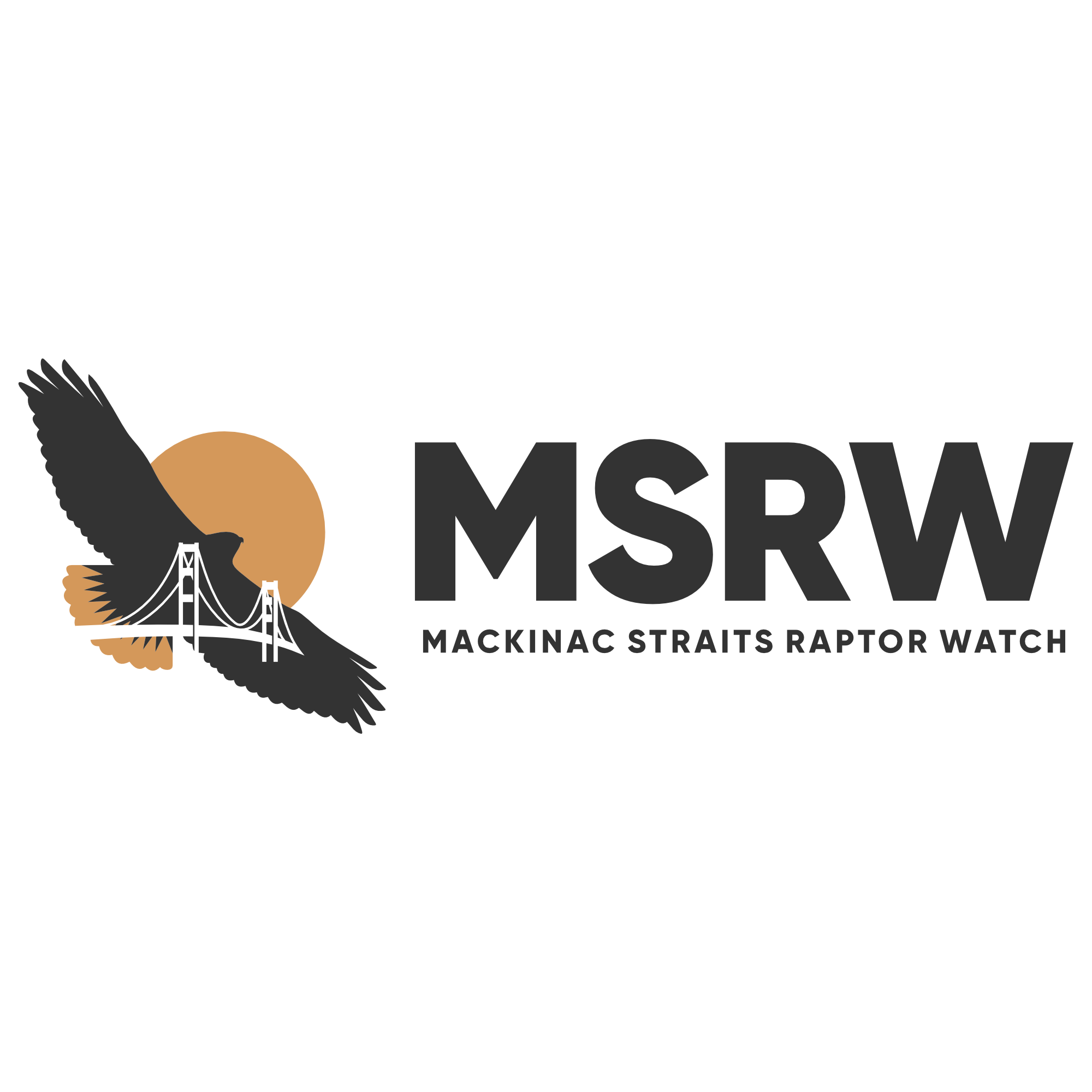Sometime early in the summer Ed Pike asked me if I would be interested in coordinating the tagging of Monarch butterflies as they passed Point LaBarbe during the 2020 fall migration to their wintering grounds in Mexico. I was a bit hesitant as first, but when I mentioned it to Laurie, the retired science teacher, she got rather excited about the prospect of spending a few autumn days outside capturing monarchs for science. Early in her teaching career, she collected monarch caterpillars so her elementary school students and our three kids could see metamorphosis up close. Even after she made the move to middle school to teach science and our kids grew up and moved on, we have continued to raise monarchs in our home to release as adult butterflies. Laurie also reminded me of the hundreds of thousands of milkweed seeds I have spread throughout the Mackinac State Historic Parks over years. She was adamant that we continue helping these amazing insects.
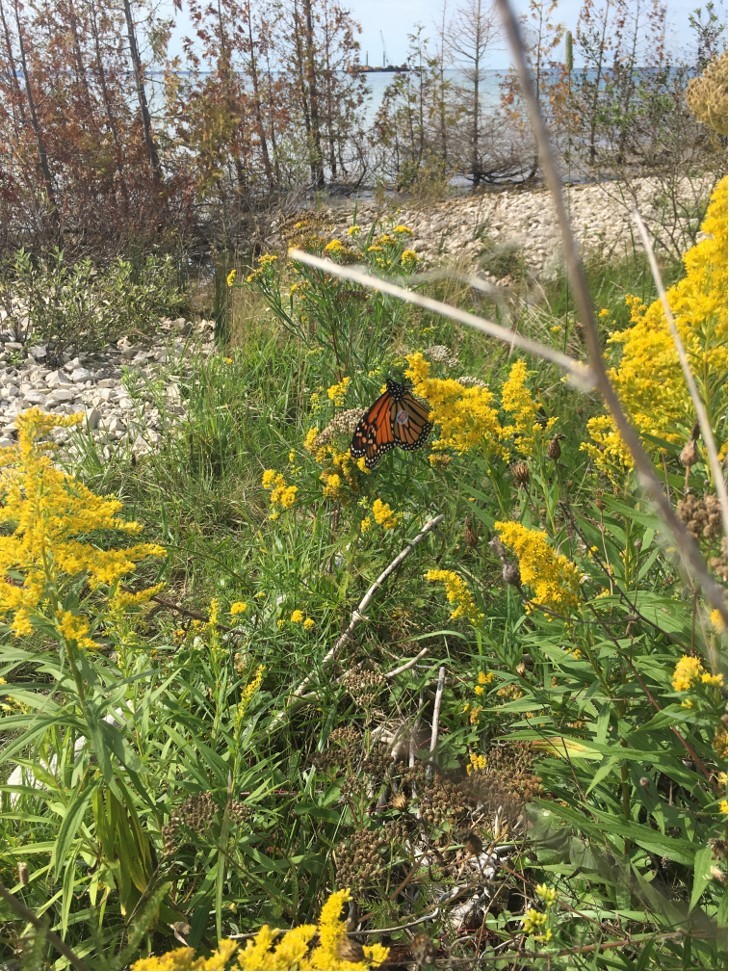
After I told Ed we would take on the project, he suggested we order 500 individually numbered tags from the Monarch Watch organization, with the hope of capturing close to that number during the migration. Once the tags arrived in early August, Laurie and I located a couple of 25-year-old butterfly nets in our garage and pulled up the calendar. About that time, we learned that the peak monarch migration through the Straits area usually takes place around the first week in September. Much like the hawk migration, weather conditions can greatly influence the timing of the monarch migration, and Laurie and I had a pretty full September calendar starting Labor Day weekend.
We wanted to start tagging monarchs at the beginning of the migration, so we could tag as many as possible before Labor Day arrived. Our first day of tagging at Point LaBarbe was August 19th, and we learned a couple things really fast. Flying monarchs are hard to capture, especially using cheap children’s insect nets, while running through the wet Point LaBarbe landscape. We were a bit relieved that the hawk count hadn’t officially started yet, and we had the Point to ourselves, because we looked pretty comical in our mostly unsuccessfully attempts to capture the few monarchs that were in the area. In four hours, we caught and tagged a total of three monarchs.
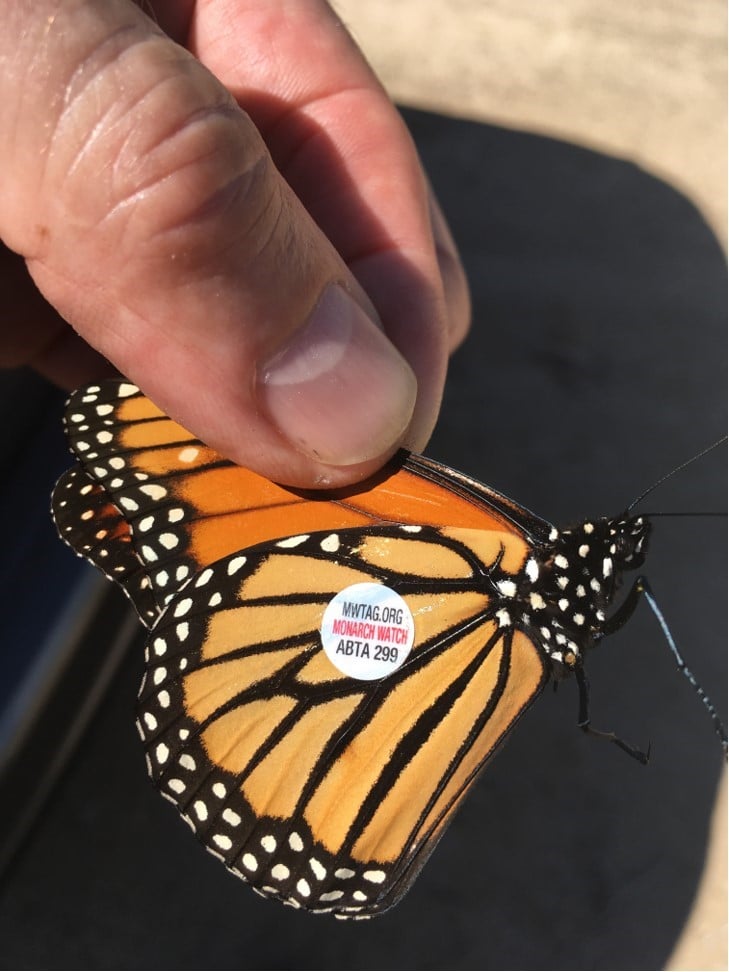
My highlight that first day was right after I finished a very clumsy and unsuccessful mad dash across a wet field. As I turned around while trying to catch my breath, I saw Laurie about a hundred yards away, laughing at me so hard she could hardly stand up. On the way home that day we decided to order a couple better butterfly nets and come back as soon as the hawk counters started seeing a few more monarchs in the area.
We returned five days later, on August 24 and tagged three more. Calvin counted 27 monarchs passing the hawk watch site that day. We only had 494 tags left!
The next day we saw Ed Pike and Steve Baker at the point. Laurie recalls Steve asking if we had been humiliated by these butterflies yet. If he had asked me that question, I would have told him that was why we were doing most of our searching for monarchs in areas out of view from the folks at the hawk watch site. I didn’t want all those hawk counters to be distracted by me running about and tripping over every little stick or log hidden in the vegetation. The good news Calvin counted 393 monarchs that day and we tagged 38. Only 456 tags to go!
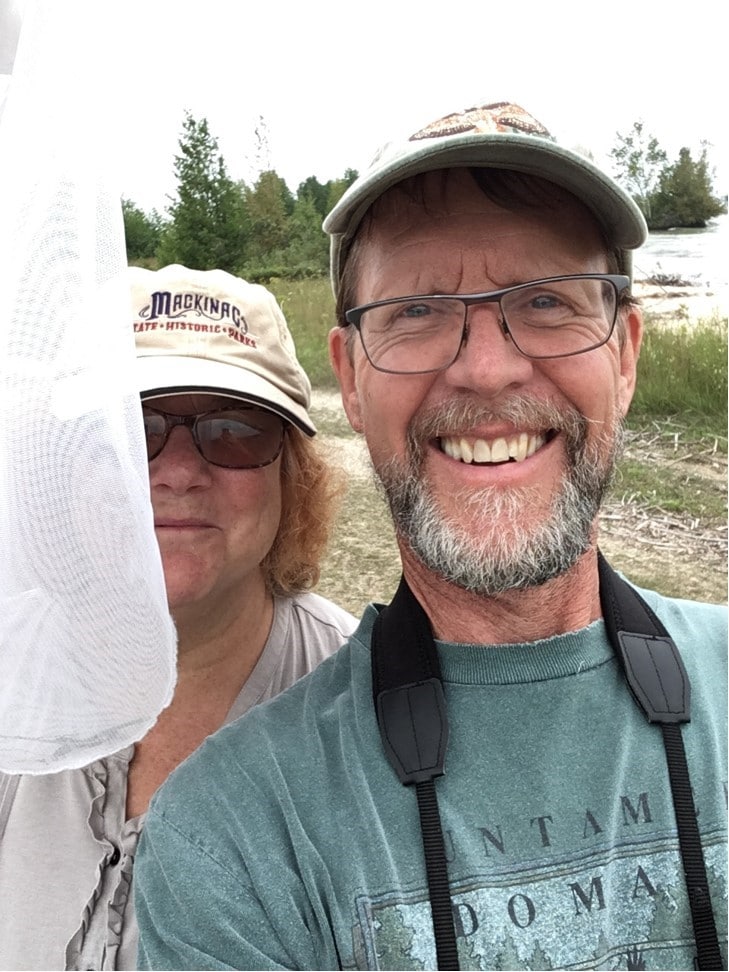
It rained the next day, so we stayed home and licked our wounds. On the 27th we returned and tagged monarchs every day for seven days in a row. During this period, we greatly improved our butterfly stalking and capturing techniques, which were helped by the receipt of our new “professional” butterfly nets and by learning which patches of goldenrod the monarchs would be feeding at. The goldenrod patches chosen by the butterflies depended on the wind direction, so we got pretty good at predicting where to find them. During that seven day stretch we tagged an average of 24 monarchs per day, with a daily high of 46 and a low of five. When we later compared our daily numbers to the numbers of butterflies countered by the hawk counters, we had consistently tagged about 20% of the daily numbers recorded at the hawk watch site.
After those seven days, we took a day off because of rain and happily noted that we had tagged 213 monarchs so far. Then we realized we still had more than 250 tags to potentially use and after Labor Day the two of us would not be available to continue this project.
The good news was the monarch migration was just reaching its peak. The next day (September 4th) 199 monarchs were counted passing the hawk counter. We tagged 88 that day!
The next day (September 5th) 980 monarchs were counted and we tagged 174 monarchs, which was a daily record for this season. We could have tagged more that day, but we ran out of tags. Of the 500 original tags, Ed and Steve had used 25 of them at the hawk watch site to show visitors the technique of tagging and processing the monarchs before releasing them.
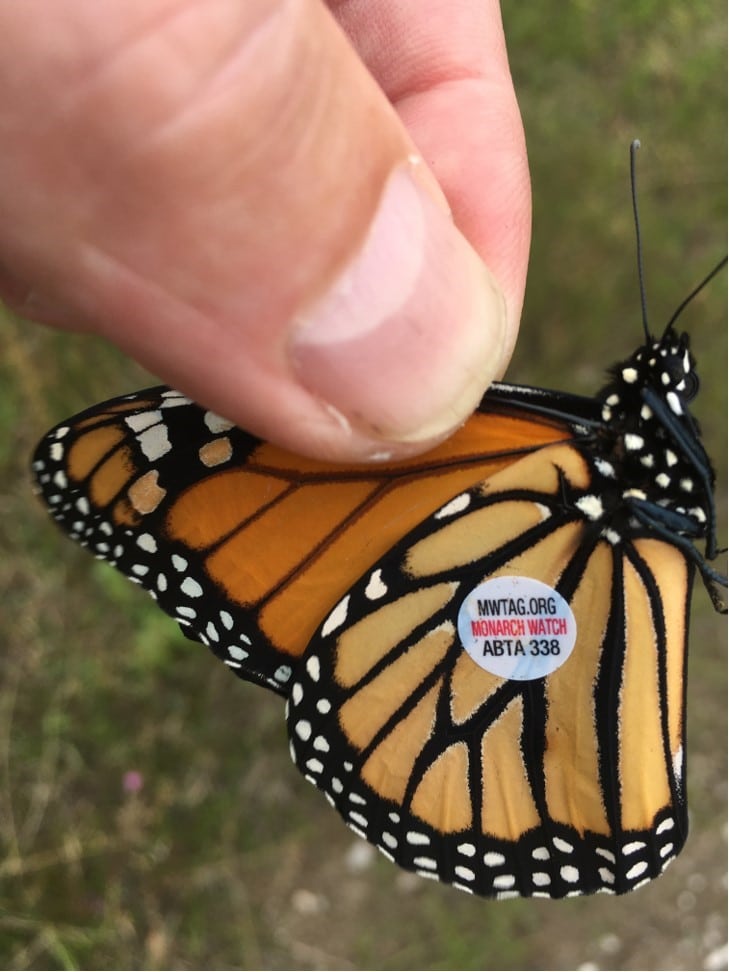
This was certainly an interesting and fun project for Laurie and I to be involved in. Together we captured and tagged 475 monarchs and as we released them, we usually wished them a safe journey while pointing toward Mexico. Hopefully many of them will complete that amazing journey, and maybe one or more of these tagged butterflies will be recovered in the monarch preserves in Mexico. The folks at the Monarch Watch Organization will let us know if they find any that we had tagged.
We had hoped to invite some friends to help us, but with the Covid-19 concerns we didn’t want to endanger anyone. It is very hard to help someone handle and tag butterflies while social distancing. You have to get pretty close to read the numbers on those tiny tags.
Although, we were pleased that all 500 tags were used before we had to leave town, we did miss the actual peak of the monarch migration past Point LaBarbe. On September 7th, the hawk counters recorded 1829 monarchs flying past them, with another 2844 counted on September 8th.
Next year, Laurie and I will try to keep our calendar open so we can witness those numbers first hand. Laurie enjoyed this project so much, that she says if we are asked to be involved again, we should order 1,000 tags next year. We’ll have to wait and see.
—Jeff Dykehouse Autumn 2020

